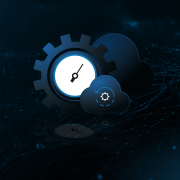
How to create your first backup plan
1. Think about the devices which you need to protect. What are these devices – PCs, laptops, servers? How many of them?
E.g. 12 laptops, 3 computers, 3 servers (one with virtualization – eg. Hyper-V).
2. What is the size of data stored on these devices (How many GB/TB/PB)?
3. Decide where would you like to keep your data. In the cloud or maye locally?
4. Define which devices are critical – these are the devices without which the company is not able to carry on with its work. For such devices the traditional backup is not enough. They require also the disaster recovery feature which in case of the breakdown will give the possibility to run the broken machine with all its data (including the operating system and drivers).
‘Each enterprise owns different IT infrastructure, however it is always possible to distinguish a few key devices which are present in the most of companies in the SMB sector and in case of failure of these devices the particular company cannot operate. Among the others, these devices are: laptops of CEO and Board Members, email and domain servers, device with invoicing system and any other device which serve the commonly understood ‘production’ typical to particular enterprise (in the factory it may be the device which operates the conveyor belt while in the other enterprise these may be the laptops of sales representatives).’
Ladislav Ovsak, Sales Director for Slovakia, Xopero Software S.A.
5. Define which data are critical.
‘Each enterprise possesses data which loss may cause dramatic effects. Such data are vital to the company while the devices on which such data are stored are not that important. The example may be the secretary’s computer in the dental office with the list of patients appointments for the following month. In case of breakdown it is enough for this dentist office just to recover the patient list and open it on any device (other computer or smartphone for instance) or simply print it. However, it is important that such devices have a short-interval backup scheduler running and also support the backup of open files.’
Nicola Marotta, Sales Director Italy, Xopero Software S.A.
6. Define your RPO i RTO (Recovery Point Objective, Recovery Time Objective). In the easiest words – you have to answer yourself two fundamental questions:
- what is the maximum time that you can give yourself to restore the data in case of breakdown?
- how long can you NOT have full access to your data and applications?
It is common knowledge that if the enterprise doesn’t work, it doesn’t generate profits so each breakdown and lack of data availability means the financial loss to the company. Therefore, remember to test whether your backup solution runs properly and if it works within your RTO and RPO range.







